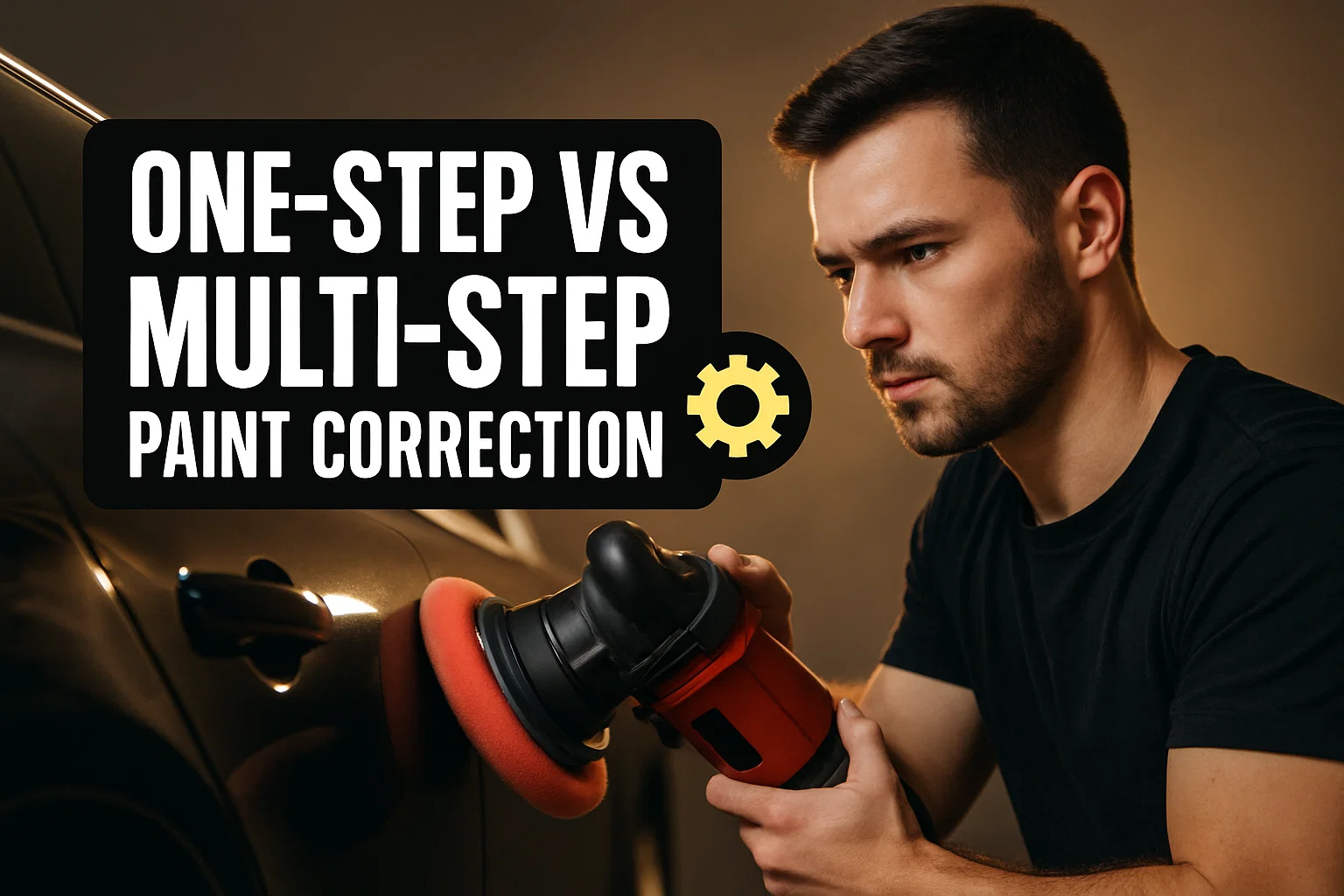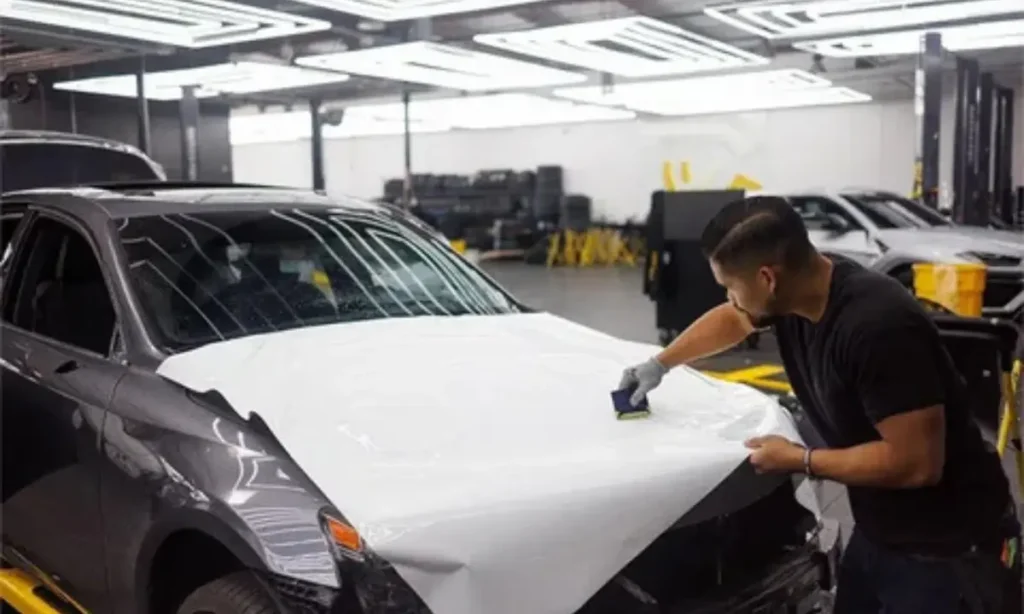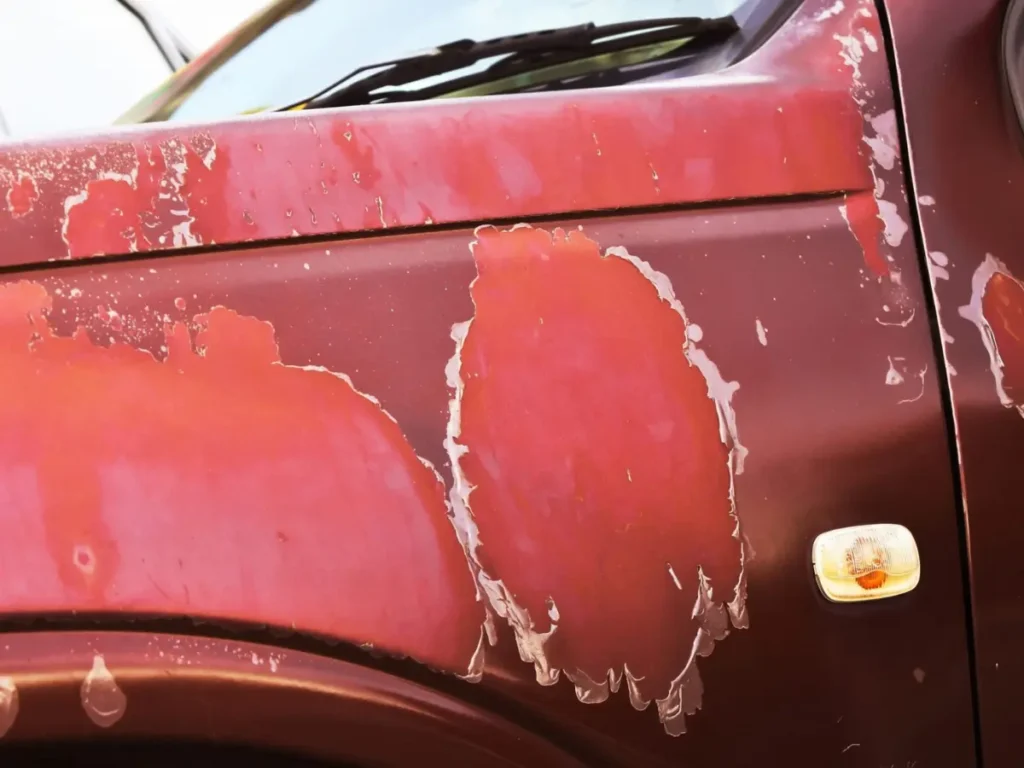When done properly, paint correction can make a drastic improvement to your vehicle’s appearance by eliminating surface imperfections that dull the shine. It is accomplished through various levels of polishing, ranging from a single step to address minor scratches and swirls to multi-step treatments to address severe defects. By learning the basics of the paint correction process, you can choose the method that is most appropriate for your vehicle and will achieve specific goals. In this piece, you’ll learn the fundamentals you need to know to make your car’s paint look the best it has.
What Is Paint Correction?
Paint correction is the process of returning a vehicle’s paint to its original smooth and gloss finish. The process is accomplished using specialized polishing pads and an abrasive compound with machines that remove defects such as light swirls, scratches, oxidation and haze. Unlike waxing or buffing, which are temporary fixes for the skin, paint correction utilizes mechanical action to take a thin layer of the cleat coast off your automobile and expose a clean view below.
What Is a 1-Step Paint Correction?
A 1-step paint correction, or single-stage correction is a process that involves applying only one polishing compound or pad to revitalize the paint. In this procedure, a polisher utilizes a cutting and a finishing effect in a single pass to eliminate light to moderate paint imperfections like swirl marks, fine to moderate scratches, and surface oxidation.
The goal of a 1-step correction is to offer the paint a general appearance improvement in a limited amount of time. It is employed when a car’s paint is in an acceptable state and needs only a surface advancing instead of extensive reconstruction.
A 1-step does not eliminate stubborn scratches or serious defects. Instead, it offers approximately 60-80% imperfection elimination and significantly improves gloss. Afterward, auto detailers regularly utilize waxing or sealing to preserve the paint and finish. It is frequently utilized on daily drivers, more fragile paint types, or preparatory to ceramic coating.
What Is a 2-Step Paint Correction?
Polishing (Refining Stage): Following compounding, a fine polishing compound and a softer pad are used on a slower speed to do away with any micro-marring or haze left in the rear of the first step. This stage increases gloss, quality, and mirror-like length to the tone, resulting in optimal effectiveness and proves that the two-step procedure is ideal when the paint has severe to modest defects. Two-paint correction isn’t superior to one-paint correction and smoother repairing laconic.
What Is a 3-Step Paint Correction? Stage 3 Paint Correction.
Third stage painting repair is the most complex and time-consuming method to return the vehicle’s color to almost near perfect. By like or with three distinct degrees, different contraptions, and dissimilar tactics takes away they flaw progressive do away with.
- Compounding (Heavy Cutting):
The first stage uses the harsh competent compound h and critical cutting pad to eliminate deep conceals major dullness and swirl gabs. The first stage polishes the clear coat and elite extensively flaw.
- Polishing (Refining):
The other volume of analyzing has a finer abrasive pink and a deeper cleaning pad to eliminate any floss or holograms that defeat from the first stage aimed to equalize the surface and return gloss and clarity.
- Finishing (Glazing and Sealing):
The concluding stage uses ultra-fine polishing devises or pretreat staining polishes with very soft pads to increase the depth and reflection of the paint.

When 3-Step Paint Correction is Appropriate
- Severe swirl marks, deep scrapes, or etching are removed from the paint.
- This high-end or antique car requires a show-quality finish that is flawless.
- Overall, the paint is so damaged due to neglect, severe contaminants, or poor prior care.
- You are willing to spend on a time-consuming, premium refurbishment method.
3-step paint correction will take more time and money than either one- or two-step versions, but it will provide the highest feasible surface quality and protection.
Visual Comparison: 1 Step vs 2 Step vs 3 Step Paint Correction
The distinction in between the steps of paint correction is apparent in terms of the results’ progression.
A 1-step paint correction eliminates light swirl marks and minor defects. Approximately between 60-80% of the paint’s clarity and shine can be expected. It noticeably improves its appearance, but deeper scratches and heavy marks are still present.
A 2-step paint correction, employs both compounding and polishing operations. As a result, moderate defects are removed such as deeper scratches and oxidation that improve paint clarity and increase gloss to near perfection. Still, small imperfections may be visible upon very close examination.
A 3-step paint correction is the most accurate, involving both compounding, polishing, and a finishing operation. Severe defects must be eliminated, and a mirror-like gloss should be put in place. In addition, the paint surface should lack minor imperfections, so the paint’s flatness, depth, and clarity create a showroom quality. This approach eliminates all possible imperfections throughout any vehicle surface for the most exceptional level of finish.
| Level | Number of Stages | Defect Removal | Finish Quality | Time Required | Best For |
| 1-Step | One | Light (60-80%) | Good | Short | Light swirl and light scratches |
| 2-Step | Two | Moderate (90-95%) | Very high | Moderate | Moderate to severe defects |
| 3-Step | Three | Deep (95%+) | Flawless | Longest | Heavy damages, deep scratches |
Which is Right to Choose
Selecting the appropriate paint correction stage relies on your paint’s condition and the outcomes you wish to attain. A one-step polish is recommended for light swirl marks and little blemishes, which provides rapid shimmer and requires minimal work. For comprehensively eliminating moderate imperfections such as deep scratches and oxidation, a two-step polish provides thorough polishing and nearly near-finished work. A three-step polish is best for eliminating serious damage and eradicates deep scratches, offering a mirror-like, blemish-free finish. Choose the level of correction that is suitable for your paintwork, bearing in mind the level of damage, time, and money you want to spend, or consult a professional.
Conclusion
Paint correction is an essential step in restoring your paint’s vibrant glow by eliminating defects using professional procedures. A one-step polish versus a three-step polish that is required, rely on your paint’s condition and the results you wish to achieve. Varied levels of correction are available to cater to your specific requirements, from light surface defects to deep scratches and severe damage. Select the appropriate level for you and allow your car to seem perfect. izzy’s auto detailing is your one-stop shop for skilled and personalized paint correction. Learn how we can bring your car back to life by contacting us today.
FAQS
It’s the process of removing scratches, swirls, and oxidation to restore your car’s paint clarity and gloss.
1-step removes light defects; multi-step removes deeper scratches and gives a flawless finish.
Yes, defects removed are gone, but new ones can appear without proper care.
If your paint has light swirls, choose 1-step; for deep scratches or dull paint, go for 2- or 3-step.
1-step takes 4–6 hours; 2-step 8–12 hours; 3-step can take a full day or more.
Yes, but it’s risky without experience—professional detailers ensure better, safer results.
No, only defects within the clear coat; deep scratches may need repainting.




